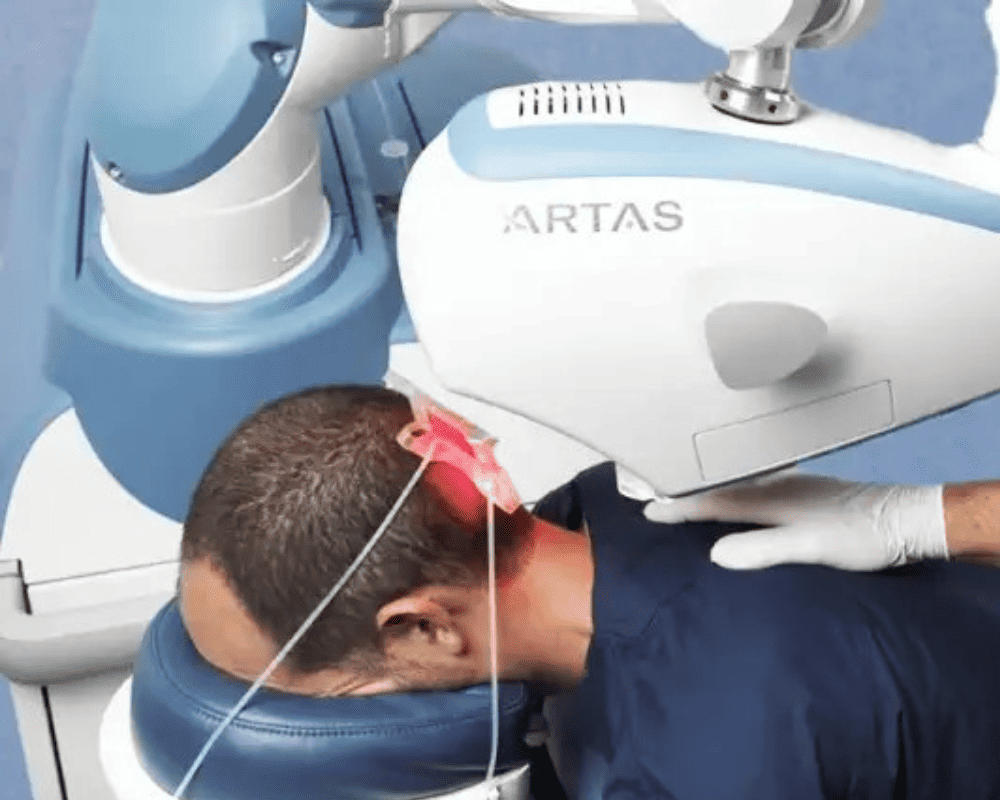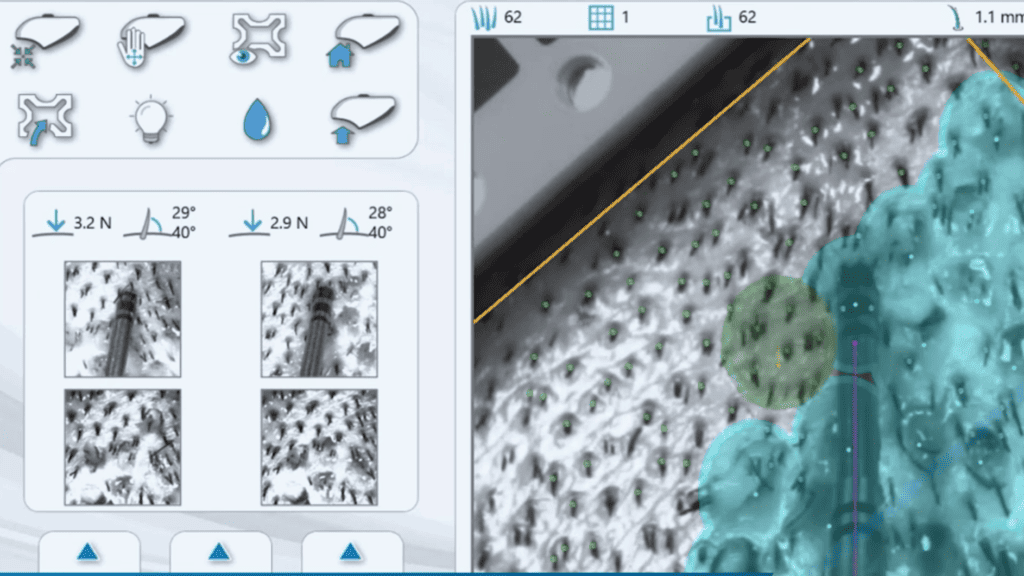ARTAS Robotic Hair Transplant
The ARTAS Robotic hair transplant is a newer method for restoring hair. It uses robots to make the transplant process more precise and efficient. This technique carefully selects and places each hair follicle to make it look natural. It's not as invasive, which means it's more comfortable and causes less scarring compared to other methods. ARTAS is just one option for hair restoration. There are other methods like FUE, each with its own strengths. Since ARTAS is a newer method, it is still changing and might get better over time. It's known for using technology to make hair transplants smoother and safer.
What is ARTAS Robotic hair transplant?
The ARTAS Robotic Hair Transplant is a new way to restore hair. It uses robots to be very precise. The robot picks and moves individual hair follicles to make it look natural. This method is not as invasive, so it usually doesn't hurt as much and leaves less scarring. ARTAS is a newer technique that might get even better in the future. It uses advanced technology to be more efficient and accurate. It's a forward-thinking choice for hair restoration.
Is a robotic hair transplant better?
Robotic hair transplant is not better than traditional methods. It uses advanced robotics for precision, but it still needs further development. Hair transplantation is a detailed procedure. Each patient needs specific, personalized care. Human surgeons are good at deciding the best approach for implanting and extracting hair grafts. They tailor each procedure to the patient's unique needs. Robotic technology offers accuracy, but skilled surgeons are often key to optimal results. Human surgeons have an advantage in personalized care and adaptability to individual cases. So, although robotic hair transplants are a step forward in technology, human expertise is essential for the best outcomes in hair restoration.
How much does ARTAS robotic hair transplant cost?
The cost of an ARTAS robotic hair transplant ranges from $8,000 to $20,000. This price depends on a few factors. These factors include how much hair you've lost, how many hair follicles need to be transplanted, and the rates of the clinic you go to. ARTAS is a more advanced method than some others. Because of this, it might be more expensive. This is because the robotic system is very precise and efficient. It's important for patients to think about everything they're getting. This includes how natural the results will look and how invasive the procedure is. If you're thinking about getting ARTAS, it's a good idea to talk to a hair restoration specialist. They can help you understand the costs and benefits for your specific case.
How much does ARTAS robotic hair transplant cost in Turkey?
ARTAS robotic hair transplant in Turkey usually costs between $3,000 and $8,000. The price can change based on how much hair you've lost and which clinic you go to. Turkey is known for having cheaper medical procedures, and ARTAS transplants are no different. Even though it costs less compared to other countries, the quality of the procedure in Turkey is generally good. Patients can expect advanced technology and experienced specialists. This price range makes it a good choice for people who want quality hair restoration at a lower cost. If you're thinking about getting an ARTAS transplant in Turkey, it's important to research and choose a reputable clinic to get the best results.
What is the success rate of Artas hair transplant?
The success rate of the ARTAS hair transplant is about 50-70%. This is lower compared to traditional methods. The reason is that ARTAS uses a robot, which might not always match the careful work of a human surgeon. Human surgeons can better adjust to each person's unique hair and scalp needs. Although ARTAS is advanced, it can't always do what a surgeon can. So, if you're thinking about ARTAS, it's good to talk with a specialist. They can help you understand what to expect and if it's the right choice for you.
How does ARTAS robotic hair transplant work?
First, the robot, guided by a doctor, scans your head. It uses special cameras and algorithms to find the best hair to move. Then, the robot gently removes these hairs one by one. This part is very precise, thanks to the robot's accuracy. Next, the robot, still guided by the doctor, carefully places these hairs in areas where you need more hair. The goal is to make your hair look natural and full. The process is less painful and leaves fewer scars compared to some other methods. It's all about using technology to help improve the way hair transplants are done.
How long does Artas robotic hair transplant last?
The ARTAS robotic hair transplant can last a lifetime, like traditional methods. This procedure involves taking hair grafts from the back of the head. The back of the head is resistant to hair loss. These grafts keep their resistance even when moved to areas with less hair. The transplanted hair usually takes a few months to grow fully. Once it grows, it stays for good, like the hair at the back of your head. Results can vary, but they often last a long time. ARTAS is a durable solution for restoring hair. It's a good idea to talk to a hair specialist to understand how it might work for you.
What are the disadvantages of robotic hair transplant?
Robotic hair transplants have some disadvantages. They work well for straight, dark hair but not as well for light or curly hair like Afro-textures. The robot can sometimes miss grafts, unlike a human surgeon who can see and adjust better. Usually, the best results still come from traditional methods, where there's a higher chance the transplanted hair will survive. Also, robotic transplants cost more. The technology is advanced but still needs to get better, especially in handling different hair types. So, while robotic transplants are a new option, they might not be the best for everyone, especially if your hair type isn't ideal for the robot.
Is a robotic hair transplant painful?
No, a robotic hair transplant, like the ARTAS system, is usually not painful. You get local anesthesia, which means the area is numbed and you shouldn't feel pain during the procedure. The robot's way of working is gentle, so there's usually only a little discomfort after. If you do feel sore, it's typically mild and can be helped with pain medicine. Most people don't have a hard time after the surgery. So, even though medical procedures can cause some discomfort, a robotic hair transplant is generally known for being quite comfortable.








